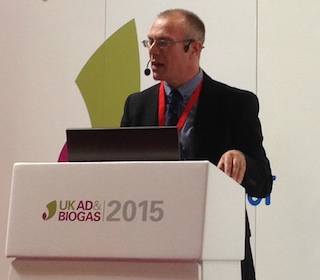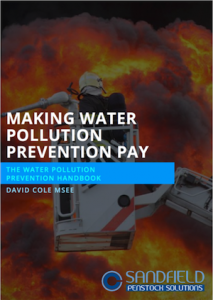
Industrial fires don’t just send smoke and fumes into the air and burn whatever they come across. Tackling a fire often means using huge amounts of water, and that water has to go somewhere. It often ends up causing just as much damage as the fire itself, if not more. Now the UK’s Environment Agency is tightening up the rules around firewater containment. At the same time billions of toxic plastic pellets used by South West Water have entered the food chain. It’s a busy time in the world of water pollution.
Industrial fires at Merseyside, Norwich, Hampshire, Staffordshire and Leicestershire
It’s been a bumper time for fires recently, with several serious incidents of industrial fire sending plumes of smoke and fumes billowing into the skies above Britain. In one fire in St Helens, residents were told to keep their windows and doors closed as a huge industrial blaze created clouds of thick, black smoke visible for miles around. It came about thanks to a waste fire at a local recycling centre which included electrical waste. The fire was fought with water and foam.
Residents were also advised to keep doors and windows closed while the fire service put out a fire at an industrial estate near Norwich. Six fire engines were called to the Rackheath Industrial Estate. And an Ocado depot fire in Andover disrupted online shopping deliveries when the robot-run grocery delivery warehouse broke out in flames. Apparently the fire was started by a fault in the automated packaging machinery. More than 30 firefighters recently battled a major blaze at Tamworth based Enviro-Strip. And seven fire engines tackled a large blaze on Dodwells Industrial Estate in Hinckley. As you can see, fires at commercial premises are surprisingly common.
Why the water used to put out fires can be so damaging
Fires are particularly interesting to us – and hopefully to you – since Britain’s Environment Agency is challenging business over how they prepare for Firewater Containment. It matters when, as we mentioned, the biggest environmental damage culprit on an industrial site isn’t always the fire itself, but the water used to combat it.
The thing is, the fire service deploys large amounts of water very quickly, and being water it has a habit of flowing in directions, and to places, nobody could have expected before ending up in the water system via a drain or sewer. This kind of water pollution is notoriously costly to fix, and very few businesses are insured against it.
Take one particularly bad fire, back in 2013. It happened in Smethwick, in the West Midlands, at a plastics recycling company, and was started by a Chinese lantern. The fire service used an incredible 14 million litres of water to contain the fire, around six Olympic swimming pools’ worth of the stuff. Then there’s the industrial fire to end all recent fires, the 2005 Buncefield disaster. It was made so much worse because the site’s last line of water pollution defence, something we call tertiary containment, was incredibly poorly designed, so poor it actually proved pointless. Five years later five companies were fined a total of £9.5 million for the part they played.
Billions of toxic plastic beads end up in the food chain
South West Water uses bio-beads, small plastic pellets, as somewhere for the bacteria used to filter pollutants from water to cling to. They’re used at nine of the company’s 650 or so wastewater facilities, and now they’ve turned up in the food chain.
A study at the University of Plymouth showed how bio-beads have escaped into the Fal Estuary, Cornwall, ‘in vast quantities’ from the Truro treatment plant over the years, sometimes in actual notified incidents, other times quietly as a matter of course. These days the pellets turn up on beaches across the south west.
Bio-beads are made from recycled plastics and many contain high levels of toxic additives, probably from the electronics recycling process. They include lead, antimony, bismuth, bromines and cadmium, all of which can seriously harm wildlife. While tighter restrictions were brought in to cover electronic waste recycling in 2006, many of the bio-beads used by SWW were made before then. Analysis of gulls in the area shows roughly half the plastic inside the birds is made up from these biobeads.
Avoid industrial fire and steer clear of environmental fines
We’re living through ‘interesting’ times in the Chinese sense, and everything you can do to future-proof your business is well worth doing. If you’d like expert help and advice about steering clear of water pollution issues, we’ll step in and make sure you’re doing all the right things.

David Cole MSEE
Technical Director
David is a pioneer of the spill containment and water pollution prevention industry with 30 years experience. He was instrumental in the development of CIRIA736 with The Environment Agency and is passionate about preventing water pollution.











